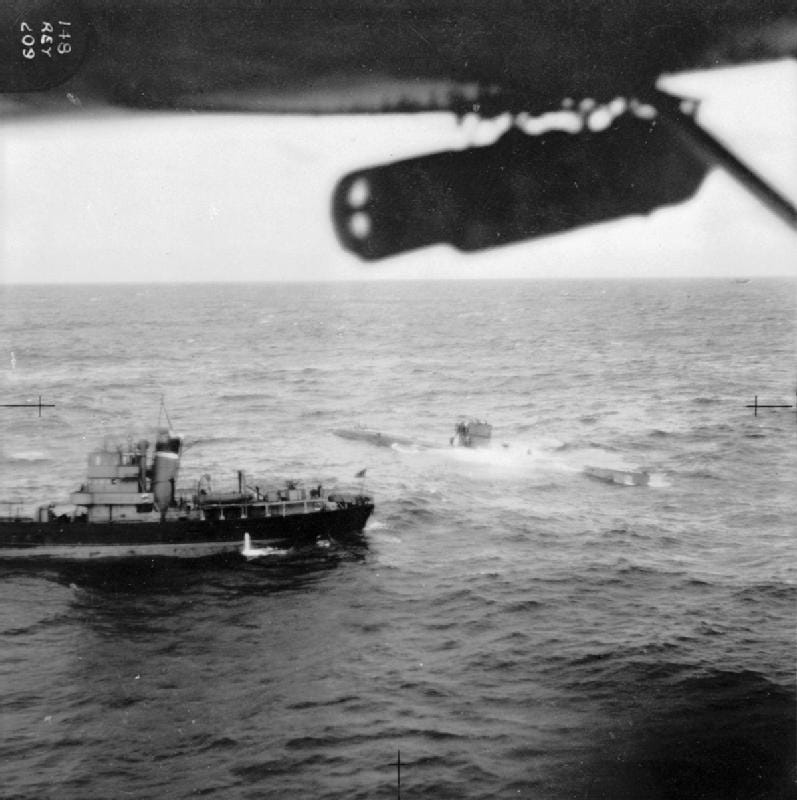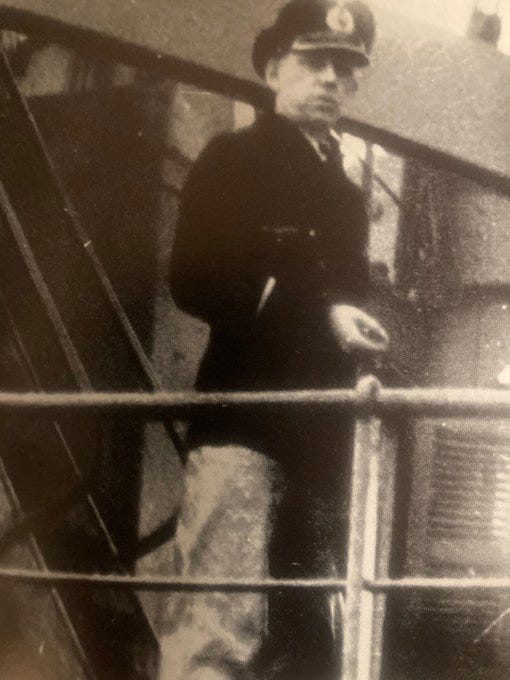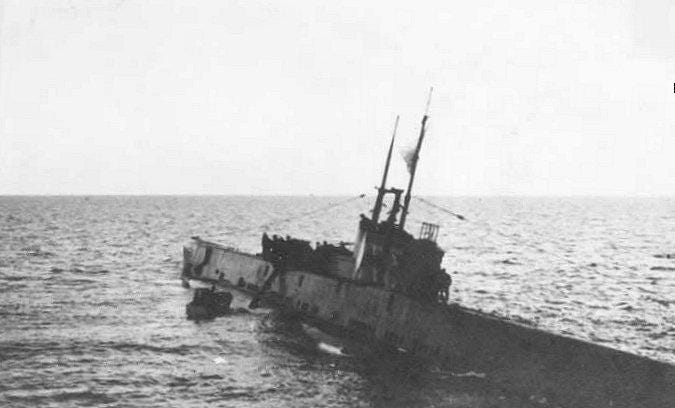When we think of the Medway Towns there are many single word adjectives or nouns that come to mind… not all of them complimentary but the one you wouldn’t necessarily think of is U-boats.
If you’ve been to Chatham dockyard you’ll know that they were responsible for building Submarines from the C-17 (launched in 1908) until the Ocelot (launched in 1962) for the Royal Navy and the Okanagan for the Canadians in 1966 but no U-boats were built or maintained in Chatham, right?
Well… there are three German U-boats connected to the Medway Towns including one built at Chatham in the late 1930s.
The first is HMS Graph, an actual U-boat.
On April 15th 1941 the type VIIC U-boat, U 570, was launched and commissioned at the Blohm and Voss ship yards in Hamburg where she immediately began her shake down cruises and tests before reassignment to Norway. On the U-boat’s arrival she took on her new, inexperienced, crew and began training exercises. Before being assigned to Trondheimsfjord and the Lofjord Naval base where she was part of the 3rd Flotilla.
Her Commanding officer Kapitanleutnant Hans-Jurgen Rahmlow was a seasoned naval officer with a history of commanding Coastal batteries and had only recently transferred to U-boats (although having briefly commanded the training vessel U-58), her First officer Bernhard Berndt had only been serving on U-boats for a few months, the Second watch officer had only just been commissioned and most of the crew were new recruits. The only man onboard who really had any experience was the Chief Engineer and three of the Petty officers!
German Naval intelligence picked up a sypher that there was a large convoy of Allied vessels passing to the South of Iceland and the Third Flotilla were assigned to attack them. U-570 slipped out of base on 24th August with orders to patrol the area South of Iceland before turning towards La Pallice base in France with provision for four weeks.
By the 27th August her Captain ordered her to surface to give the crew some rest bite as many were suffering from acute seasickness and a couple had become incapacitated. They were immediately picked up on radar by an RAF Hudson of 269 squadron flown by Sqdn ldr Thompson. Rahmlow heard the approaching bomber from the observation deck and immediately ordered a crash dive. It was too late as four depth charges were quickly dropped and one exploded a mere ten yards from the U-boat.
The resulting explosion nearly rolled the vessel, shattered her instruments, she lost all power and sprang several leaks. The smell that was generated made the inexperienced crew think that water was getting on the batteries and filling the hull with noxious Chlorine gas. The order was given to surface and ten crew raced onto the deck, under machine gun fire, unable to man the Flak guns because of the rough seas they quickly hoisted the white flag of surrender.
The officers quickly reported what had happened to Navy command and calmly destroyed their radio equipment and code books. Donitz ordered U-82 to the area to assist but was kept at bay by Allied air patrols.
The crew were kept onboard, save for the wounded (from the first attack and the subsequent attacks mistakenly made by the Royal Navy warning shots and an aircraft of 330 squadron) so that the Germans wouldn't sink her on purpose. She was taken to Iceland and beached.
By the 31st August Lieutenant Colvin RN and his team of engineers had restored power and buoyancy and the boat was sailed to Hvalfjordur where she spent three weeks under repair. It was discovered that the damage was not critical and that a more experienced crew would have been able to repair the damage and evade the attack - further compounded by the fact that the Hudson bomber had used all its depth charges in the attack and so would have lost the U-boat had she stayed submerged.
Along with her escorts, HMS Saladin and HMS Kingston Agate, the U-boat sailed for Barrow-Foreness and arrived on the 3rd October 1941. There she was renamed and ceased to be U-570, rechristened HMS Graph.
HMS Graph went under extensive tests in Scotland to test her capabilities and also for training for boarding crews so that they could become acclimatised to finding their way around U-boats looking for enigma machines and reversing any scuttling damage.
On 25th April 1942 she sailed South to Portsmouth before departing for Sheerness. Then from there she sailed up the River Medway. Whether she sailed under the escort of a Sunderland or other aircraft for her own protection in case any errant gunner feared a U-boat was repeating Prien's attack on Scapa flow, is open to conjecture.
She finished her refit in Chatham on 14th August 1942 and was taken over by Lieutenant Marriott RN before sailing for Sheerness, Portsmouth (under escort of HMS Vesper) and on to Holy loch for training.
On 8th October 1942 she left Holy loch for her first war patrol to the bay of Biscay and on 21st she sighted the German U-boat U-333 and fired four torpedoes. Four explosions were heard and "breaking up noises"
According to the U-333's log she didn't even see Graph only a torpedo track go past her and she dived to avoid any further attack but remained unscathed.
Graph's other two patrols were fairly uneventful, though she was ordered on 29th November to intercept the Italian blockade runner Cortellazzo along with HMS Sealion and HMS Clyde but all three failed to sight her. On her final patrol she fired at a German destroyer and explosions were heard. This destroyer was part of the escort of the Cruisers Hipper and Lutzow however none of the vessels were sunk by Graph, and I've not so far been able to see if they were damaged.
After her final patrol she returned to Scotland. She sailed south once more to Chatham and arrived on 13th June 1943 before finally being handed over to Dockyard control on 21st June and used for training duties.
Sadly, with a lack of parts available (seeing as they were produced in Germany), the short life of the engines and the need to replace the batteries annually, the Graph was no longer sustainable and in 1944 she was used for target practise and for tests to see what damage depth charges do. Having survived all of this, she was assigned for breaking up and towed by HMS Allegiance to Clyde. The tow rope broke in transit and the vessel beached near Coul Point. She was been partially scrapped in 1947 but parts were still visible in 1977 at low tide.
Thus ends the tale of HMS Graph/ U-570 and her brief tour up the Medway.
There is, however one last footnote that, personally I find interesting so will bore you all with now. After her capture the Officers was taken to Grizedale Hall, a POW camp for German U-boat officers. Once there they were put on trial in an Honour court by the senior Germans present, including Otto Kretschnerr the U-boat ace. They were charged with cowardice in the face of the enemy and Rahmlow (en absentia) and Berndt were found guilty. On the 18th October 1941 Berndt escaped the camp and was supposedly making his way towards Barrow (22 miles away) to destroy U-570 to redeem himself. He was caught by the Homeguard but refused to be taken, even ignoring warning shots and was unfortunately shot dead.
The British then put Rahmlow into a camp with Airmen and Soldiers for his own protection.
There is another U-boat that is linked to the Medway towns and still remains lurking out in the estuary…
Out towards the mud flats of Kingsnorth lays the remains of one of the Kaiserlice Marine's U-boats decaying slowly in Humble Bee Creak.
There is quite some lively debate as to which vessel she is, either U-122 or U-123 or even UB-122 but the original story of how she got there remains the same.
Post war the surrendered U-boats were acquired by scrap companies to break up. Twenty Three U-boats were towed from Harwich to the Medway and one of them grounded in Humble Bee Creak, the rest were stopped near by and had their engines and generators removed.
Unfortunately for the Scrap companies there was so much Scrap metal available at the end of the war that there was no money in it and the market quickly collapsed. The Boats remained on the marshes until World War Two when the other more accessible vessels were taken apart for their valuable metal.
This vessel though remains upon the marshes where she lay, her nose cone removed and resting in front of her so she cannot be used as per Versailles agreement and her hull slowly rusting away.
U-122 and U-123 were both built in Hamburg and launched in December 1917 and January 1918 respectively, both were UE II type Mine layer submarines.
Each had a crew of 36 men and 4 officers with a top speed of 11.5 knots (7 knots submerged)
U-123 was Commanded by Oberleutnant zur see Karl Thouret whose previous commands had been U-79, U-78 and UB-93.
U-122 was commanded by Kapitanleutnant Alfred Korte and was the only one of the three Vessels to score a "kill." The Icelandic vessel Njordur (A fishing trawler of 278 Tonnes) was shelled and sunk on 18th October 1918.
The third possible vessel UB-122 which is considered to be the more likely wreck, considering a comparison shot with others of the type, was built in Bremen and launched in February 1918. She was a UB III class U-boat under the command of Oberleutnant zur see Alexander Magnus, she had a similar speed to the other two vessels but was a coastal patrol vessel rather than a mine layer and although she took part in two patrols she didn't manage to sink any Allied shipping.
Which ever vessel she is, this interesting anomaly lays resting on the marshes and is little known to the people of the Medway towns. For the history geek like me it is truly fascinating but for many it is a historic irrelevance doomed to continue its slow decay, a grim fate for the last of her kind.
Finally, the U-boat that was built at Chatham….
The German U-boat U-B was indeed laid down in Chatham Dockyard and launched on 27th September 1938 as HMS Seal, a Grampus class mine laying submarine and one of two built at Chatham. She was commissioned into the Royal Navy on 28th January 1939 under Lieutenant Commander Rupert Phillip Lonsdale.
On the 29th April 1940 the Seal sailed towards the Kattegat to lay naval mines as a way of interdicting German Naval traffic to Norway some fifty miles off the Island of Vingas but things were not going to go smoothly for the British submarine. On the 4th May Seal was attacked by He 115 bombers of Kustenfliegergruppe 76 who were based at Aalborg. They sustained minor damage but not enough to stop her from laying her mines in a forty-five minute exercise.
All sounds like it is going well but… she soon struck a mine, I’m unsure if it was one of her own or not but she was forced to the surface. The damage was quite extensive and Lonsdale knew that getting back to Britain was going to be difficult and their best chance was to intern in Sweden and so a course was set but they never made it. Later the same day two Arado Ar. 196s under Oberleutnant Schmidt, bombed and strafed the Seal forcing Lonsdale to do the unthinkable and surrender to the two aircraft.
As Schmidt carried Lonsdale away (on Lonsdale’s 34th Birthday) the rest of the crew awaited Kapitanleutnant Otto Lang’s trawler, UJ 128, which towed them to Frederikshavn and then on to Kiel, arriving on the 11th May.
Seal was repaired and renamed U-B under the command of Korvettenkapitan Bruno Mann, a First World War U-boat ace who had sunk six vessels equalling 7844 tons.
However beyond propaganda and training there was not much else that cold be done with her as spare part were hard to come by. Despite evaluation of her torpedoes and finding a better pistol design that helped fix the unreliable German torpedo problems (It is a long story which Ill get to!) she was only in service for eight months before being mothballed. She was scuttled on 3rd May 1945 and later broken up.
Mann would go on to sink the SS Primrose Hil on 29th October 1942 whilst commanding the Dutch submarine O-27 now designated UD-05.










I agree with Steve, fascinating. Perhaps a subject for another article Chris, covering the training and subsequent successes or otherwise of boardings to snatch enigma machines and code books?
Love the HMS Graph story - used for training boarding parties search for Enigma machines! Fascinating 🫡⚓️🛟